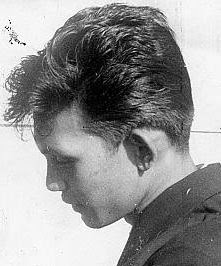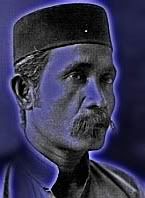25. How to...Leböng
It is hard to say nowadays the word leböng without thinking of Yasmin the model wife of that popular singer from Duran Duran, even if in Trengganu Duran Duran isn't as big as our very own Adnang Osmang. That we are led into thinking of this duo's name is merely the result of a coincidence of sounds and nothing more than that beyond. But to the matter at hand: If I were to tell you that I was once a pop singer you will recognise immediately that I am telling porkies, for that is the basic ingredient of leböng, the wilful misplacement of your ontological predicates, as they used to say in books that looked pristine, gathering the dusts of time on shelves forlorn, unread by Yasmin LeBong or Adnang Osmang.
To leböng successfully you must be able to tell your quarry stuff that he isn’t capable of verifying himself. It is not a prudent thing for instance to tell him that you are the Blessed Bess, when you are right there in front of him looking more like Adnang Osmang than the Queeng of Englang. The second rule of leböng is that you must be able to make your listener want to believe in even the most incredible yarns that you’ve spun. An expensive suit helps, for instance, when you want to persuade someone that you deal in real estate in Pualu Duyong, but placing also a bow tie that looks vaguely like the Rajah Brooke under your chin will only make him want to think of our former minister for tourism.
People do leböng for different reasons. Some merely want to draw attention that he doesn’t get at home, while others want to draw money from your bank. A man we once knew, who was known simply as Pök Löh Böng, did it just for entertainment, a harmless enough pursuit as he and everyone knew that after all that he’d just be heading for home to help his wife in the making of belacang, a commodity for which Tanjong Ngabbang was then justifiably famous.
Psychologists are divided as to why people commit leböng outside the realm of just having fun, but the name Mat Jenèng comes to mind. Leböng shares many things with nnawök, which sometimes finds expression as bèwök (standardspeak, biawak, the forked tongue lizard) in the manner of rhyming slangs. Politicians are sometimes accused of being nnawök when they are economical with the truth, but to say that he or she is leböng is to say the same and rubbing it in.
An interesting point to note is that whilst leböng sounds like something that hits you in the face, nnawök is also sometimes expressed as pelawök which is the Trengganuspeak version of pelawak the jester of your everyday life. In other words, what he or she says may be taken in jest, but deep within may lie many a word of truth.
Labels: bèwök, leböng, Mat Jenèng, nnawök, Pök Löh Böng



